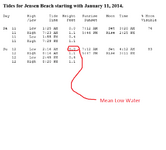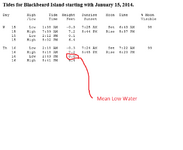- Nov 14, 2013
- 1,483
- 1,989
- 🏆 Honorable Mentions:
- 3
- Detector(s) used
- Minelab Equinox 800
Minelab CTX 3030
Garrett AT Pro
Minelab Excalibur 1000 with SEF 10x12 coil
3 Minelab Excalibur II 10 inch
Deus II
EQuinox 900
Manticore
- Primary Interest:
- Beach & Shallow Water Hunting
Hello,
Can someone shed some light on low tide for me? Lets say that on a tide chart the low tide time at a specific beach location says
11 am. What would be the best time to arrive at the beach to catch the true low tide line? Would it be several hours before, an hour before or what?
Thanks for any help.
Can someone shed some light on low tide for me? Lets say that on a tide chart the low tide time at a specific beach location says
11 am. What would be the best time to arrive at the beach to catch the true low tide line? Would it be several hours before, an hour before or what?
Thanks for any help.
Upvote
0






